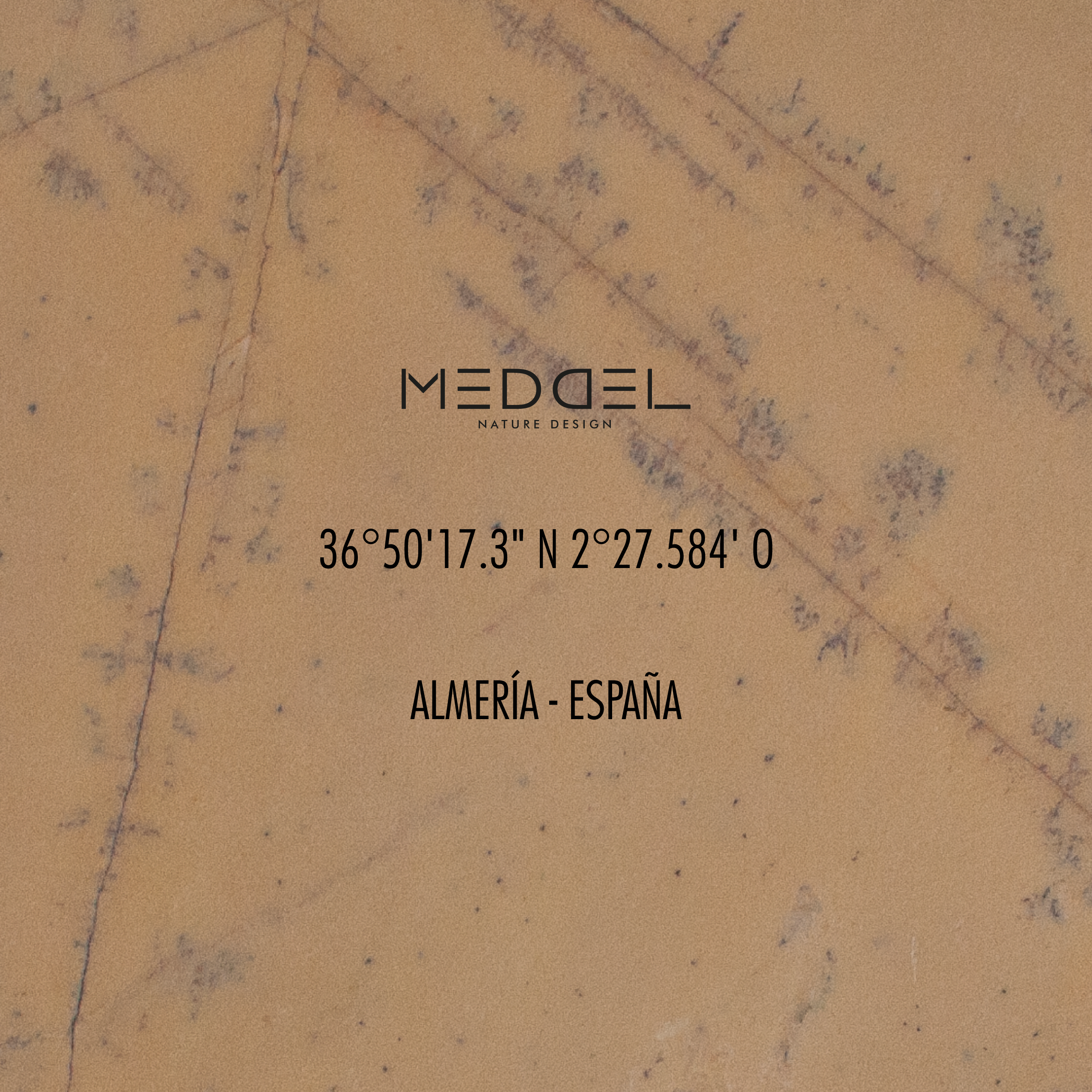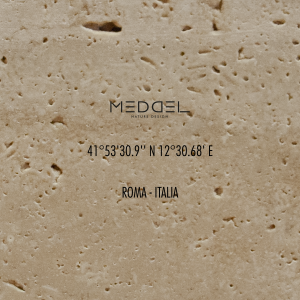
01 Dec Geological Character Marble Almería
THE MOST INTERNATIONAL SPANISH YELLOW MARBLE IS IN THE SOUTH OF SPAIN
The Medes Dining table designed by Joaquín Moll features this national marble.
GEOLOGICAL CHARACTER OF ALMERIA MARBLE. For Meddel it means the constant of understanding and contemplating the composition of the stone with all its perfections. Its process and its history are presented in a sedimented laminated surface that shows the scars of the earth and speaks of ages and epochs.
Geological character means to appreciate what surrounds us with interest to discover, intrigue and mystery to know and ability to understand what it is as its main and proper value. In Almeria is extracted one of the most famous marbles of Spanish origin, as is the white marble Macael.
Through the study of geological formation a common ode to natural formations is professed, the environment and its changing profound transformation is understood. The geological rhythms bring one or the other moments that lead to material differences, and the geological life is thus differentiated into ages and eras by classifying the formations by their origins.
Spain has a rich structure of contrasts; from basins to mountain ranges, large rock formations, wide variety of processes leading to a series of fluvial and coastal erosions. The geological character of the Almeria marble is one of the most remarkable.
In this case, it gives us a yellow marble, fine-grained, with brown veins that evoke marine plants. Inside, the dolomite has gained space, replacing calcium by magnesium as the water disappeared, which is why it gains robustness and stores a strong and solid composure, something easy to appreciate to the eye and touch.
Within the variety of the geological character of the Almeria marble, the yellow Triana variety is extracted in the Spanish quarries of Códar, Almería.
Meddel presents it in its designs mainly in matte finish. In the production process, it is important that its lines fit the design and provide harmony and continuity according to the constant search for beauty.
The term "geologic character" refers to the specific characteristics or properties of a region or area that are related to its geologic history. Geology is the science that studies the Earth, its composition, structure, processes and history of change over time. Therefore, the geological character of an area is determined by a number of geological factors.
The province of Almeria, located in the Andalusia region of southeastern Spain, has a diverse and fascinating geological character.
Almería forma parte de la Cordillera Bética, una cadena montañosa que se extiende a lo largo del sur de España. Esta cordillera es el resultado de la convergencia de las placas tectónicas africana y euroasiática.
La provincia cuenta con un relieve montañoso, con sierras como la Sierra de los Filabres, la Sierra de Gádor y la Sierra Alhamilla. Estas formaciones montañosas han sido esculpidas por procesos geológicos a lo largo del tiempo.
La tectónica de placas ha dado lugar a la presencia de pliegues y fallas en la región. Estos fenómenos geológicos son evidentes en la estructura de las montañas y la disposición de las capas rocosas.
La geología de Almería incluye una variedad de tipos de rocas, desde sedimentarias hasta ígneas. La actividad volcánica pasada ha dejado su huella en ciertas áreas.
The coast of Almería, especially in the Cabo de Gata-Níjar Natural Park, exhibits a unique geology with cliffs, coves and rock formations. The interaction between land and sea has resulted in picturesque coastal landscapes.
Almeria has been historically known for its mining activity.
In summary, the geological character of Almeria is diverse and presents a rich geological history that has shaped its landscape and influenced its development over time.



Sorry, the comment form is closed at this time.